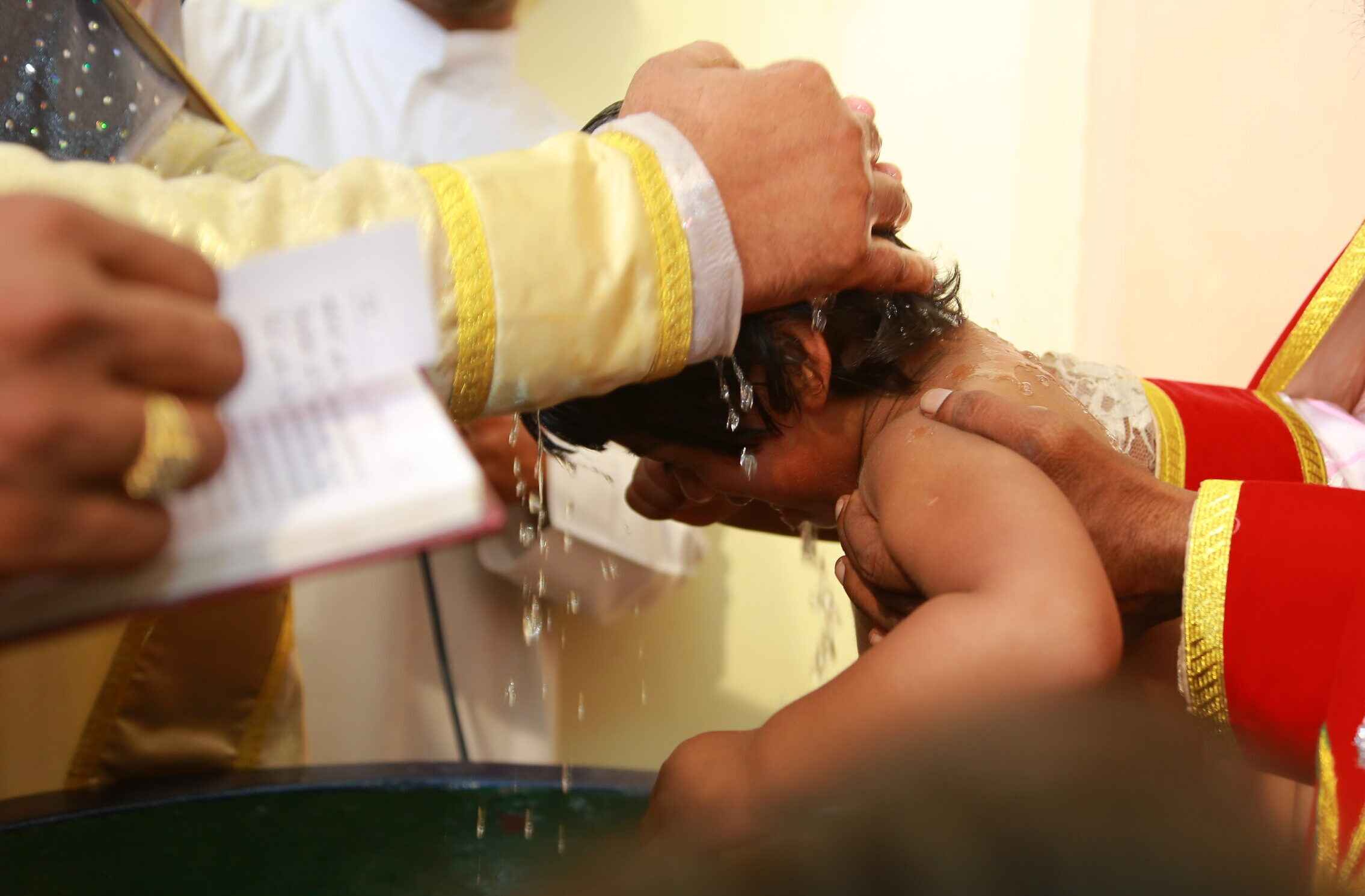
Holy Baptism in the Orthodox Church is a Christian initiation ceremony to the faith and church. It is through initiation that one finds the true meaning of the church. It is the church that administers the Holy Baptism. Holy Baptism is not a private affair of a family but it is as a celebration of a community of worshippers of the church in accepting a new member amongst its fold into the midst of the community. The newly baptised child will be received by the church and takes care of his or her spiritual growth just as a Mother. Thus baptism is an entry into the Church which is the Body of Christ.
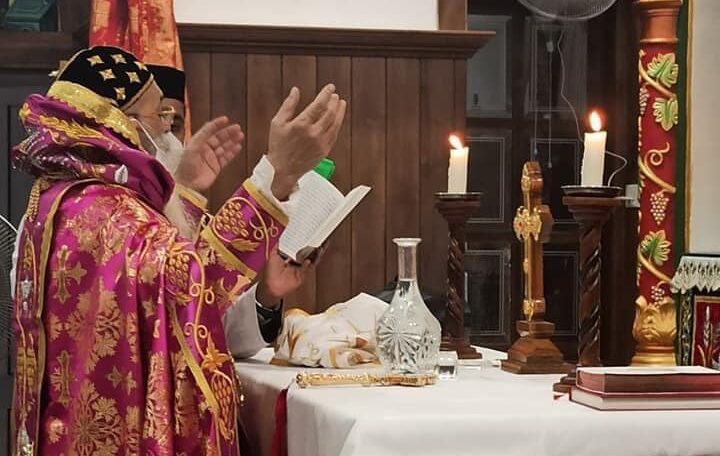
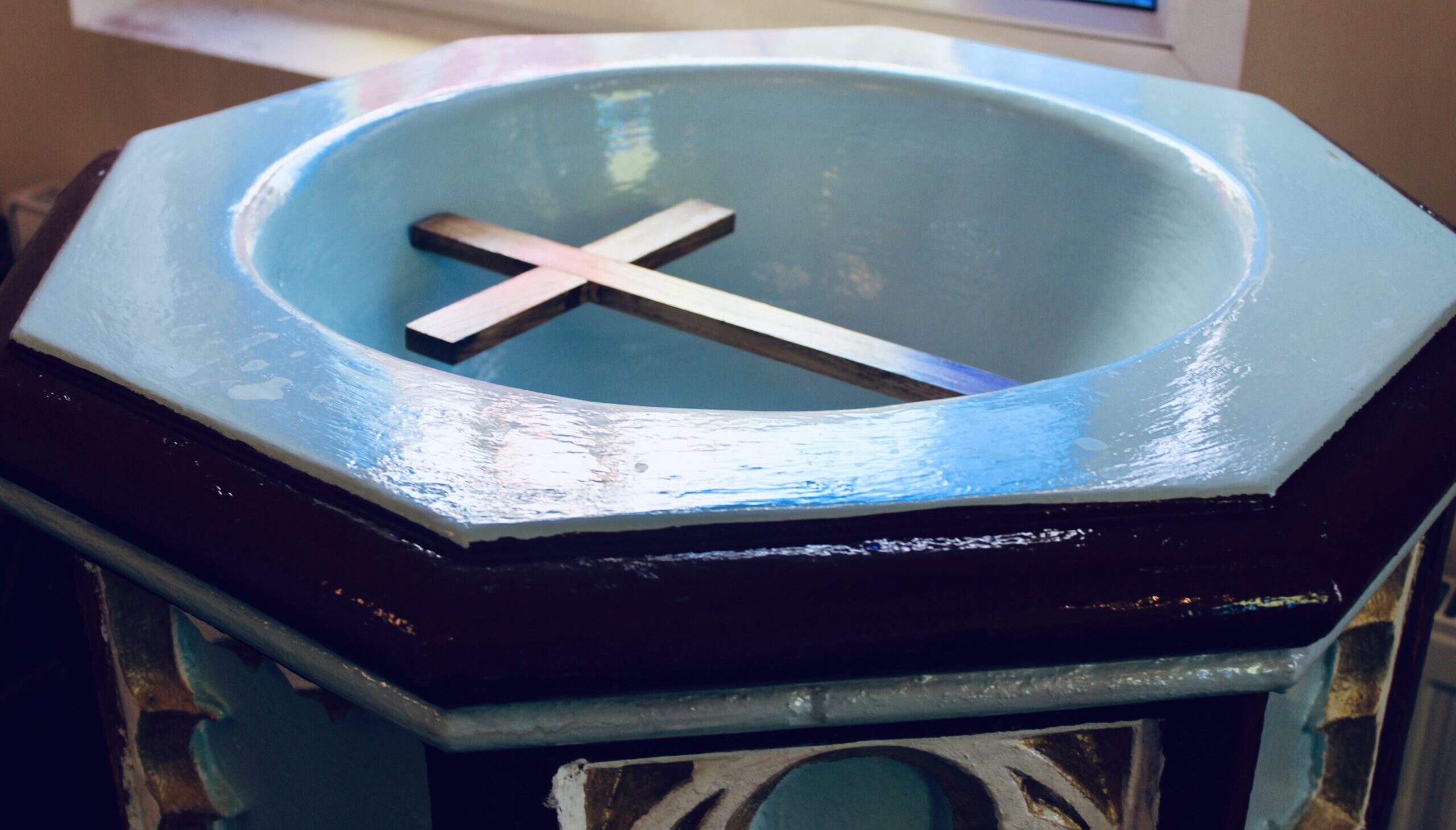
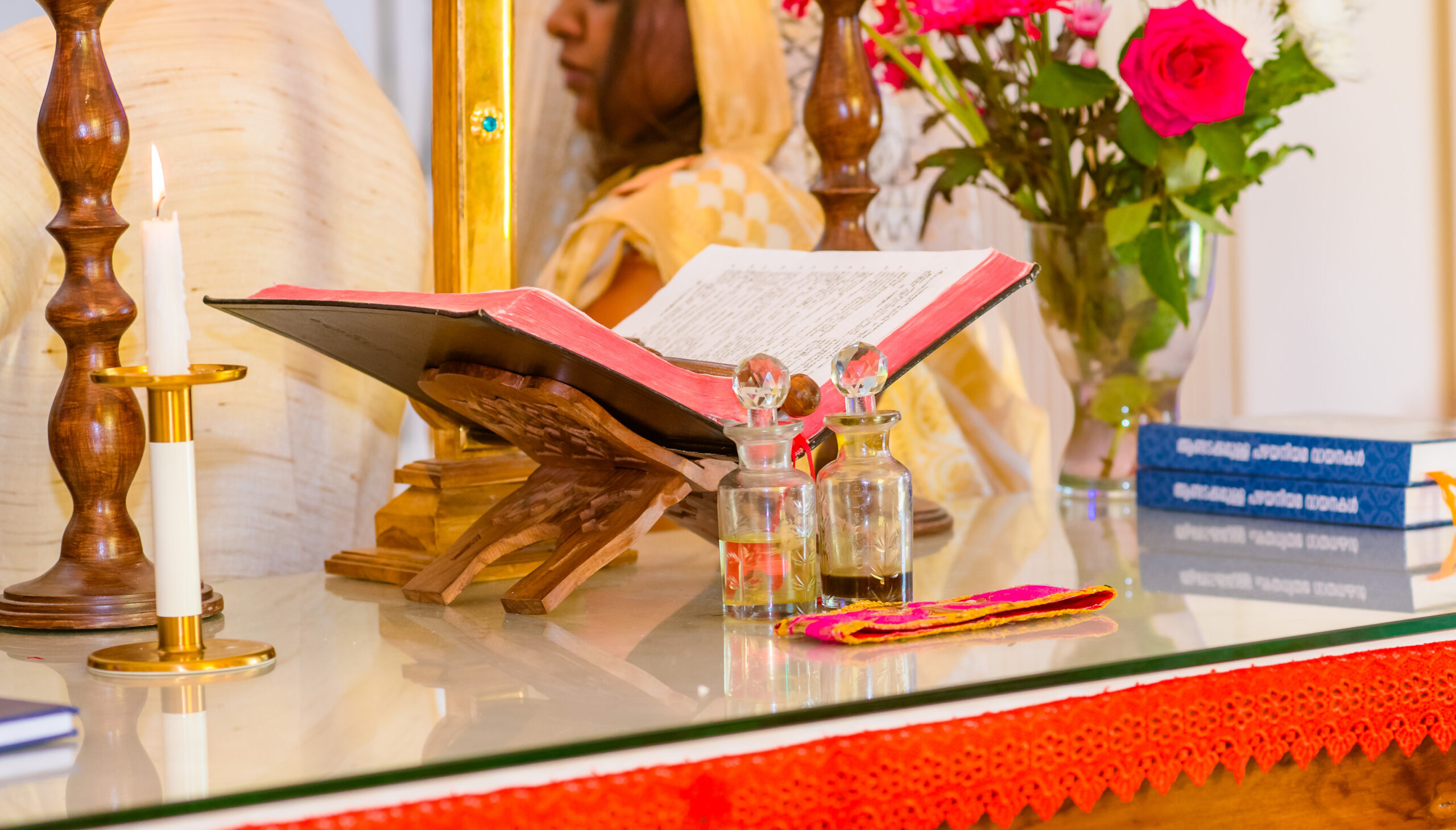
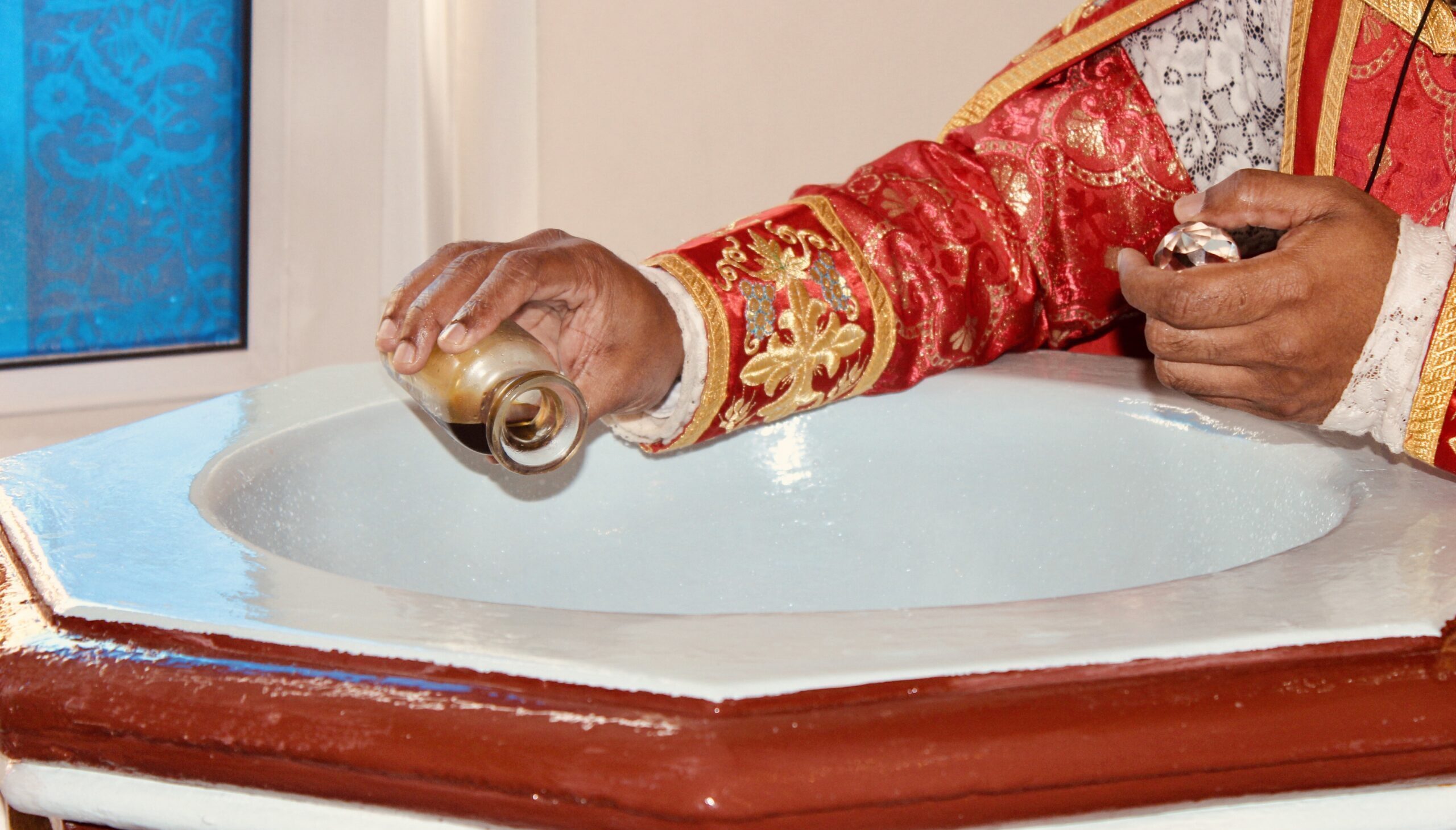
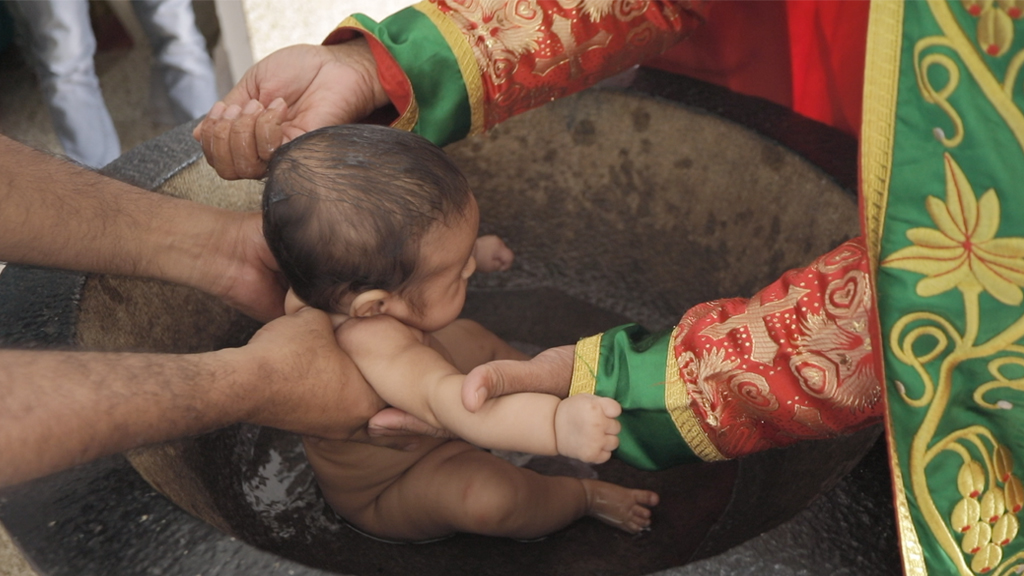
Christian baptism is being from the Holy Spirit and Fire. (Luke 3:16-16). We know the biblical story which states, the Holy Spirit descended upon Christ at the river Jordan. Those who are new born in Christ as member of a new creation in the early church were referred to as enlightened, which reflects upon getting liberated from bondage of sin and evil and becoming enlightened through Holy Spirit. This brings us to understand the notation of St Paul to the Corinthians;
“Therefore, if anyone is in Christ, he is a new creation” (II Corinthians 5:17).
he liturgy of the Holy Baptism consists of three parts. It includes three sacraments at the same time, namely the Sacrament of Holy Baptism, the Sacrament of Holy Mooron (Oil) and the Sacrament of Holy Eucharist.
In the Sacrament of Holy Baptism it is divided into three parts, they are the Prefatory Section, the Holy Baptism/Immersion and Chrismation and partaking of the Communion of Holy Eucharist. The Prefatory Section is educating the need for one to become baptized. Nowadays it is of teaching the parents and the Godfather or Godmother who would introduce the infant to the church fold. The Holy Baptism or Immersion of the full body in the water in the name of the Triune God is a fundamental act of baptism. The Communion of Holy Eucharist is when the infant is given the Holy Communion at the end of the service of the Holy Baptism. The sequence of these three rites affirms the interrelatedness of Baptism, Confirmation and Communion.
The service begins with hymns related to Psalms 29:1-4 for the male infant and Psalms 45: 10-13 for the female infant. This is then followed with a recital of prayer;
“David stands here in Spirit by those who are to be baptised and let us hear him saying; O’ all that thirst, come to God and be strengthened and put on strength” and
“May the seal of grace be a protection to us who believe. As by the blood sprinkled on the door-post, the Hebrews were saved from the destroyer”.
A prayer follows to bless this servant to understand the vanity of this world and to cast away every deadly service. Then a prayer from Psalms 23:1 is exhorted, followed by a prayer from Psalms 23:2.Following this the prayer of Preface (Promieon) and Prefatory (Sedra) is read. Then a hymn is sung about, the infant who have come to baptism, the baptism that the son of Zachariah, John the Baptist has prophesised, that he will baptise with water but the one that comes after him will baptise with the Holy Spirit. Our Lord came for baptism and John was the witness to it and finally the Father proclaimed from above; this is my son; this is my beloved.
Following this, a reading from the book of New Testament of St. Paul the Apostle to the Romans is read. (Romans: 5:20 – 6:4 & 8).This subsequently is followed with the reading from of the Gospel of St. Luke. Luke 3:15-16.
With the above readings, now the first section of the Holy Baptism begins.
In Baptism, one will note that the Priest will sign the infant three times on the forehead of the infant in the sign of a cross at three different times during the service of baptism.
Anointing with the Holy Oil is the sacramental act adjoining to the Holy Baptism. Initially the priest marks the sign of cross three times on the forehead of the infant and then anointing the holy body to complete the process of regeneration from water and spirit. Chrismation is mandatory as this is the sign of the seal of the Holy Spirit in the infant.
The Crowning (a crown is laid on the head of the infant) this act symbolises the infant to grow in Christ and be worthy to rule with Christ in his kingdom. It also indicates the royalty, victory and freedom in Christ. It also denotes that they are soldiers of Christ to fight evil.
Finally the baptised infant receives the Communion of the Holy Eucharist which is mandatory after baptism. The hymn sung at this time is about Adam who was unable to taste the fruit in Paradise. This now being enabled through this Holy Communion of body and blood of Christ which is now placed in his/her mouth. This symbolise the worthiness of the infant after receiving the Holy Spirit in him/her through the Holy Mooron anointed on him/her and after being born again in the Holy Spirit from the water, they are ready to receive the body and blood of Christ through the Holy Communion.
After this the deacon takes the infant around the altar and kissing the four corners and the Holy Gospel indicating the Royal Priesthood. The dismissal prayer after the Holy Baptism to all present is;
“go in peace while we entrust you to the grace and mercy of the holy Trinity with the Holy Mooron you have received from the expiating baptism of Christ our God forever and ever”.
This is the same dismissal words exhorted by the celebrant at the of the Liturgy of the Holy Eucharist wherein he says;
“…..go in peace glad and rejoicing…..as you have received the provisions and blessings from the atoning altar of the lord…”
And further reminds us;
“……and as you are redeemed by the victories cross of the Lord and sealed by the sign of the Holy Baptism…..”
There has always been difference in thoughts and teachings about performing the rites of infant baptism compared to the Orthodox tradition with other denomination. Most denominations perform this rite of baptism only after when the child reaches the age of 12 or 13. According to the Orthodox tradition, children of Christian families are given baptism on the basis of the faith of the family and the church. In the Acts of Apostles there are a couple of references to the baptism of families (Acts 10:44-48, 16:15 and 16:33). Here we do not see any references to denial of baptism to the children. Those baptisms were primarily based on the faith of one person in the family. Parents and the parish as a whole have responsibility to take care of the spiritual growth of this newly born child. Especially the Godfather and Godmother have such responsibility.
Those who join the church from a non-Christian or non-orthodox background will be given adult baptism.
Since having baptised we are not of ourselves but we belong to Christ and therefore our identity is that of Christ. St Paul states in II Corinthians 1:21-22;
“but it is God who establishes us with you in Christ and has anointed us. He has put his seal upon us and given us the spirit in our hearts as a guarantee”.
The expression of seal refers to marking the sign of cross through anointing with the Holy Mooron. Once again in Ephesians 4:30 St Paul says;
“…do not grieve the Holy Spirit of God is in whom you were sealed for the day of redemption”.
These similar passages tell us that the anointing was an integral part of Holy Baptism from time of the New Testament itself. This reminds us at all times by the Church to us as a reflection of our identity and worthiness to our Lord.